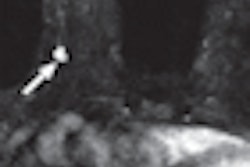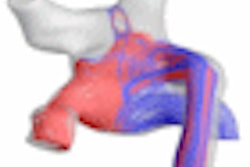MRI can detect a significant number of fractures of the proximal femur that are missed by plain radiography, as well as prompt early diagnosis and initiation of treatment, according to a British study.
Led by orthopedic specialist R. A. Sankey, the study from Chelsea and Westminster Hospital in London is published in the August issue of the British edition of the Journal of Bone and Joint Surgery (2009, Vol. 91-B:8, pp. 1064-1068).
Chelsea and Westminster Hospital treats an average of 770 patients each year for proximal femur fractures. The researchers noted that patients who present with hip pain following a fall and who have no fracture detected on plain radiographs are a particularly difficult subgroup to treat.
Not discovering an occult fracture of the femoral neck, the authors wrote, may lead to displacement of the fracture and unnecessary surgery. In contrast, early diagnosis of the fracture can lead to prompt treatment, a shorter hospital stay, and fewer complications from prolonged immobilization.
Study criteria
The prospective study analyzed 102 consecutive patients treated at the hospital from March 1997 to November 2007. The criteria for adding an MRI scan to an already taken negative plain radiograph was a high clinical suspicion of fracture. Those patients received an MRI exam within 48 hours, when possible.
Four patients were removed from the study because they did not receive an MRI scan after the radiograph. The remaining 98 patients consisted of 74 women and 24 men, with a mean age of 77 years (range, 42-100). The mean time between admission and scanning for the whole group was 2.4 days, ranging from zero to 10 days.
The scans were conducted on a 1-tesla MRI system (Magnetom Impact, Siemens Healthcare, Erlangen, Germany) between 1997 and 2002 and a 1.5-tesla MRI scanner (Magnetom Symphony, Siemens Healthcare) beginning in 2002.
The MRI scans revealed 81 patients (83%) with an abnormality on MRI. Of these, 42 patients (43%) had a fracture of the proximal femur and 39 (40%) had evidence of other bony or soft-tissue pathology in the hip, pelvis, or low lumbar region.
Abnormality identified
Of the 19 patients younger than 70 years of age, 17 (89%) had an abnormality identified by MRI. The 17 scans included eight proximal femoral fractures, four pelvic fractures, four patients with metastatic bone disease, and one patient with a subcapital fracture secondary to osteoporosis from pregnancy.
MRI was most prolific in discovering pelvic ring fractures in 27 patients (28%) among the 98-subject group. Of those 27 cases, 15 patients (55%) had simple fractures of the pubic rami, one patient had an isolated sacral fracture, and nine patients had a combination of both. The two remaining patients were found to have acetabular fractures. All 27 patients were treated with supervised mobilization.
With nine patients with fractures of both the pubic ramus and sacrum and no patients with fractures of the femoral neck associated with pelvic ring fractures, the researchers wrote that they "do not recommend an MR scan in the presence of an acute fracture of the pubic ramus on plain radiographs."
In addition, with nine of the 20 intertrochanteric fractures deemed incomplete, the physicians at the hospital treated those cases nonoperatively with regular radiologic and clinical follow-up.
The researchers concluded that MRI is appropriate for patients with high suspicion of proximal femur fracture, detecting "a significant number of fractures that are not apparent on plain radiographs."
The group also recommends stabilization of fractures of the femoral neck and nonoperative management of all incomplete intertrochanteric fractures, "unless a patient is unable to partially weight-bear. There must also be a high index of suspicion of undiagnosed malignancy."
By Wayne Forrest
AuntMinnie.com staff writer
September 1, 2009
Related Reading
No need for bone scans after therapy starts, June 26, 2009
MRI helps find fractures among elderly female ED patients, April 29, 2009
MR spots reason for chronic groin pain, but may not alter management, April 27, 2007
Proper positioning for the pelvis and proximal femur, August 8, 2003
Copyright © 2009 AuntMinnie.com
| |||||||||||||||||||||||||||||||||||
| Intertrochanteric fracture | 20 | 8 | 12 | Subcapital fracture | 13 | 3 | 10 | Greater trochananteric fracture | 7 | 7 | 0 | Metastatic disease (no fracture) | 6 | 6 | 0 | Lesser trochanteric fracture | 1 | 1 | 0 | Subtrochanteric fracture | 1 | 0 | 1 | Other | 6 | 6 | 0 | No abnormality | 17 | 17 | 0 | Total | 98 | 75 | 23 |
| Source: Journal of Bone and Joint Surgery | |||||||||||||||||||||||||||||||||||



.fFmgij6Hin.png?auto=compress%2Cformat&fit=crop&h=100&q=70&w=100)




.fFmgij6Hin.png?auto=compress%2Cformat&fit=crop&h=167&q=70&w=250)











